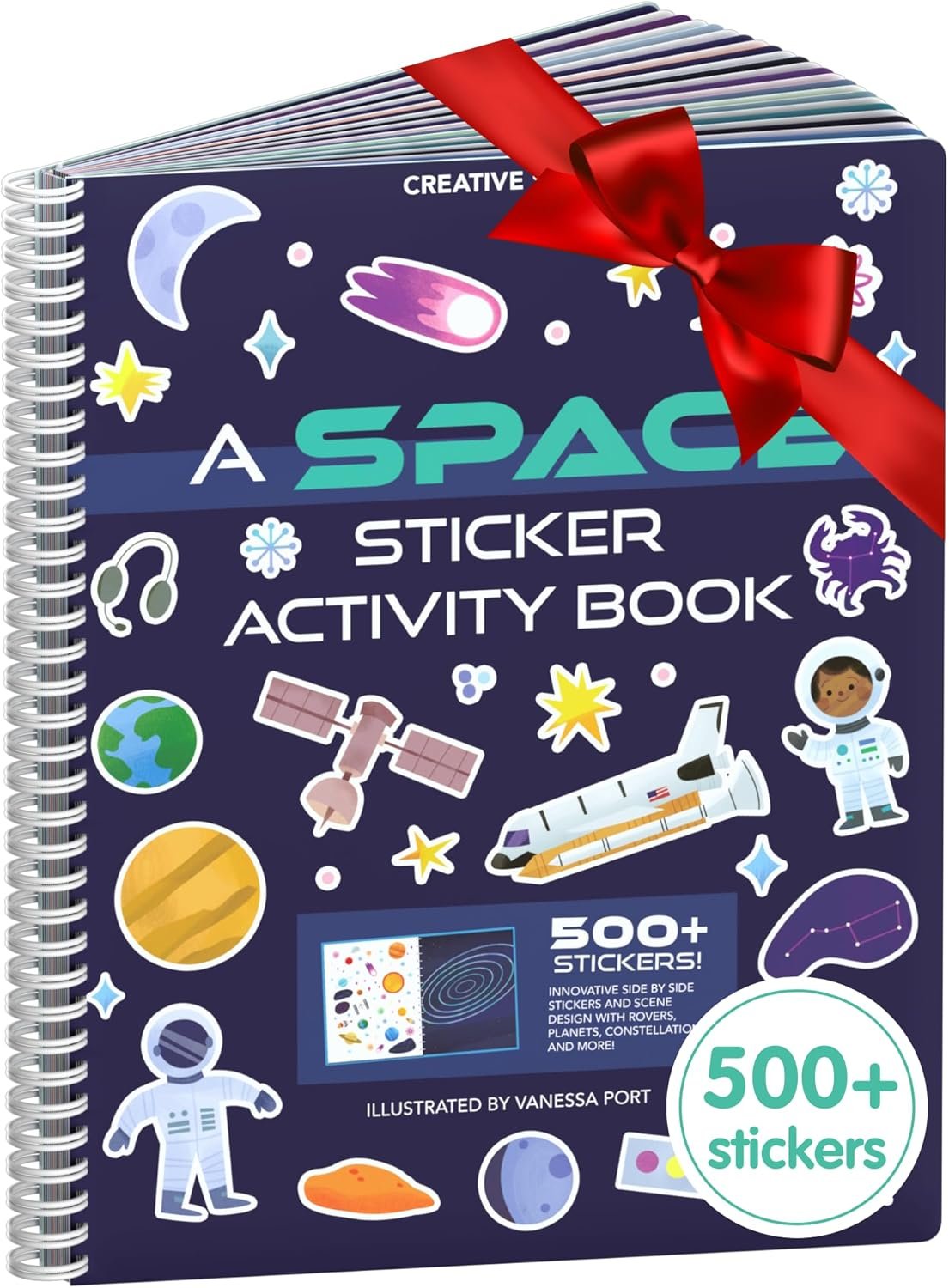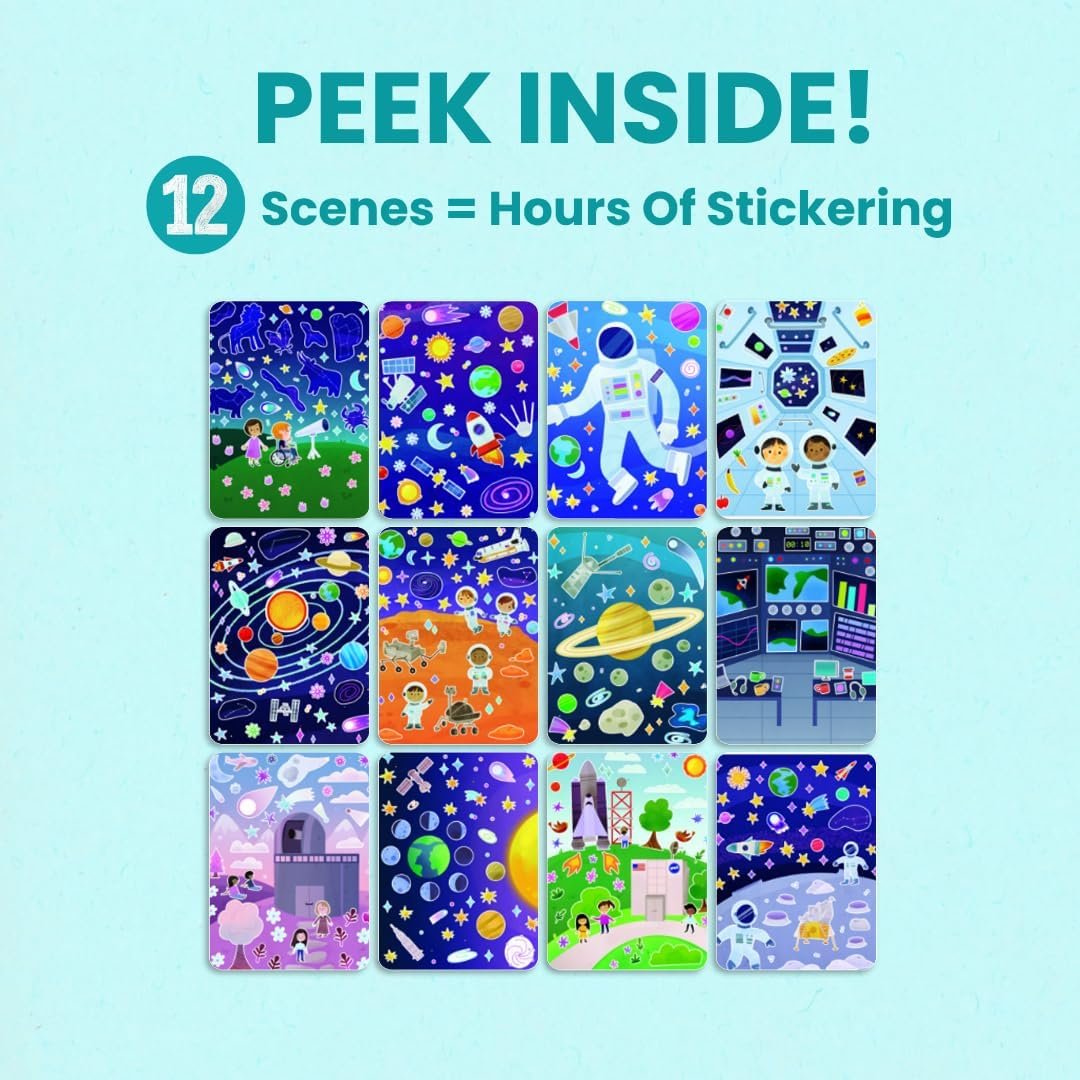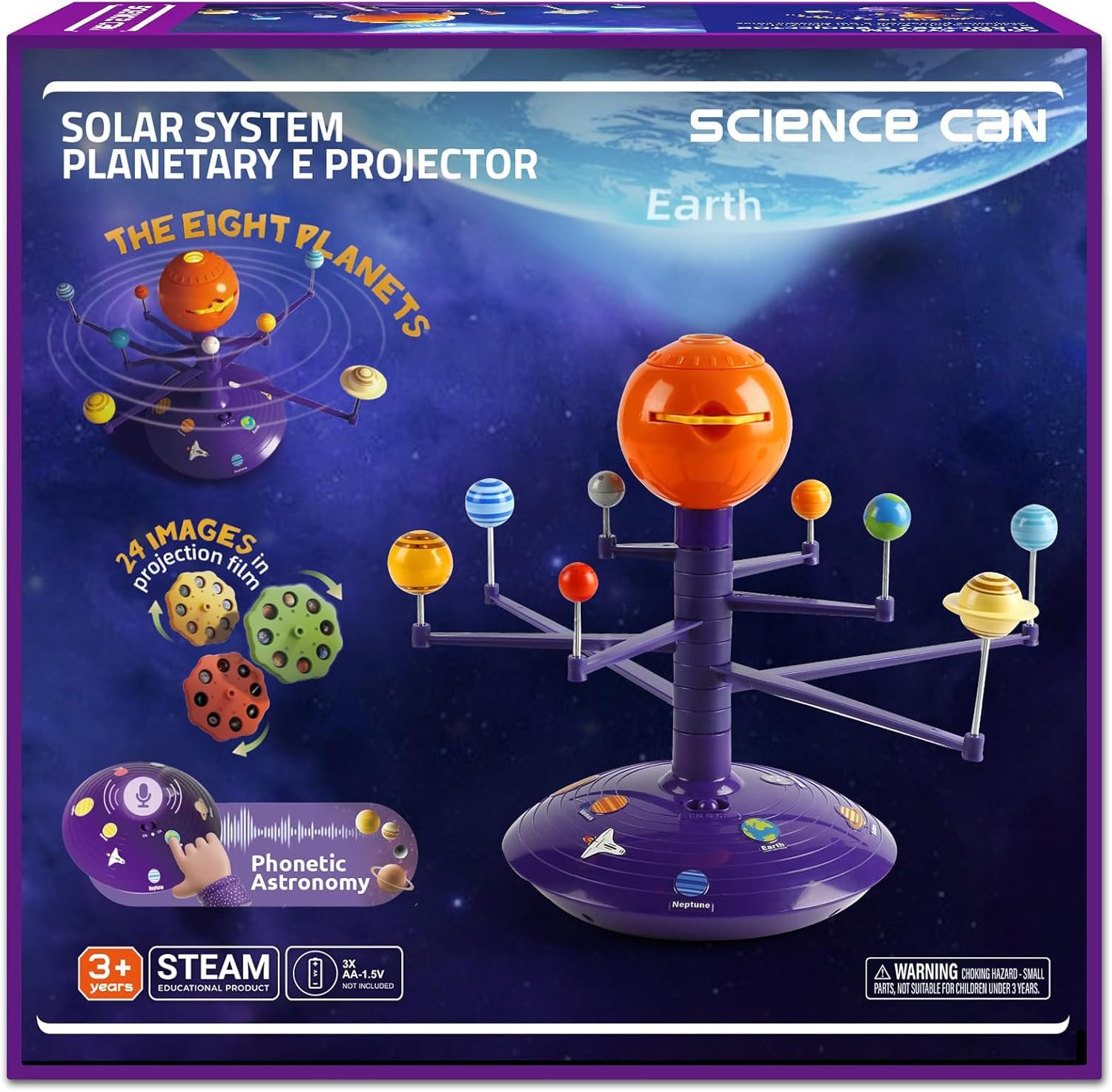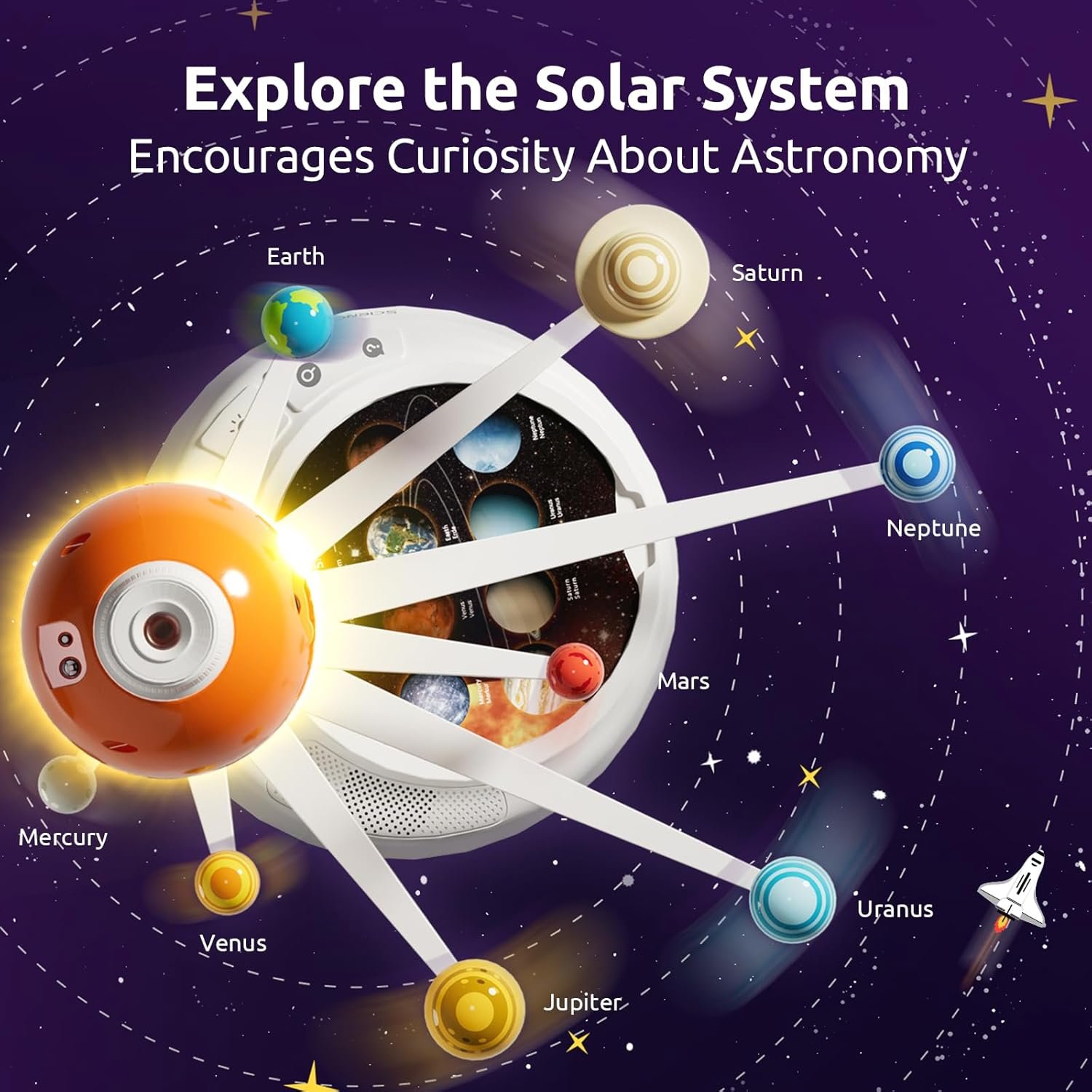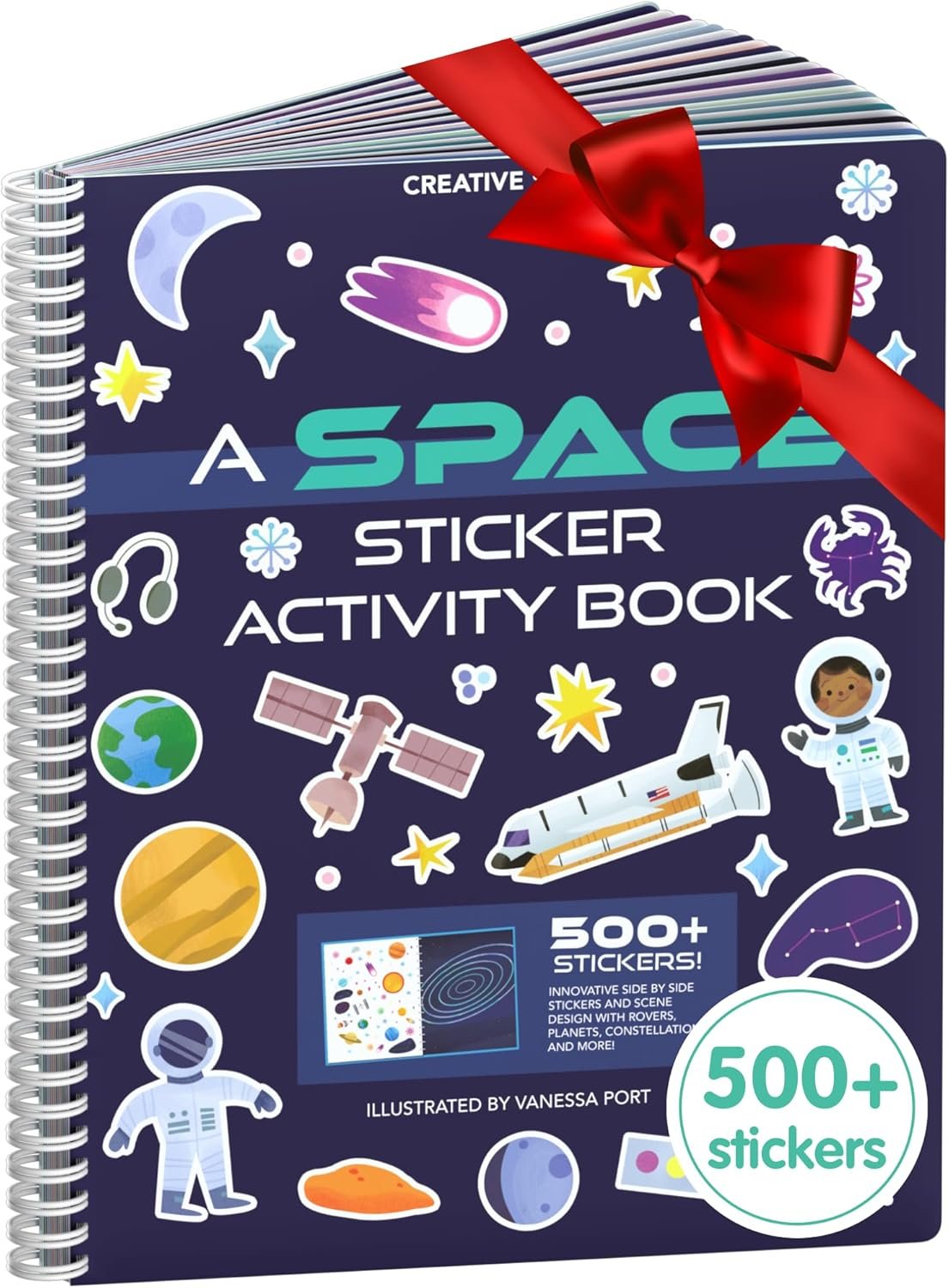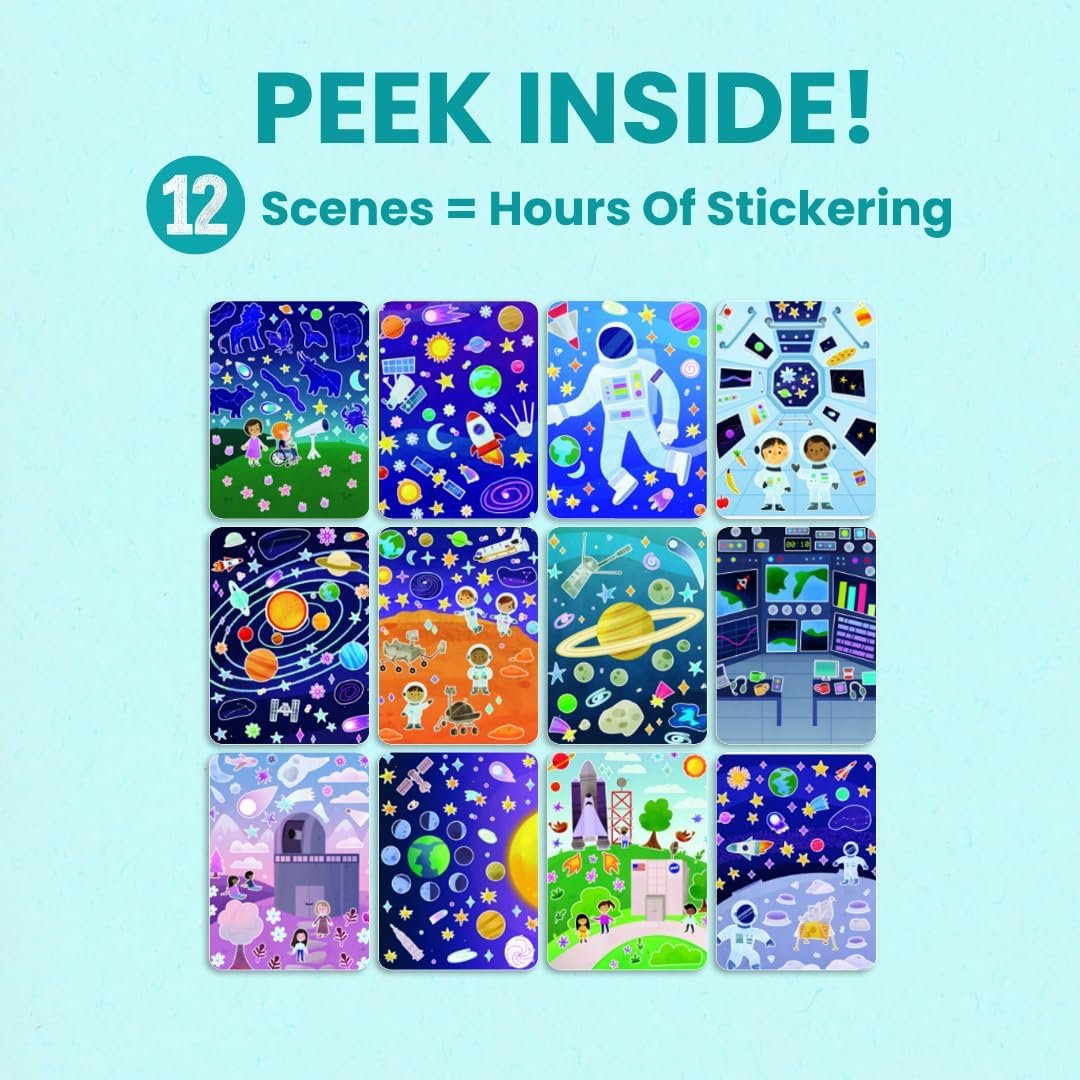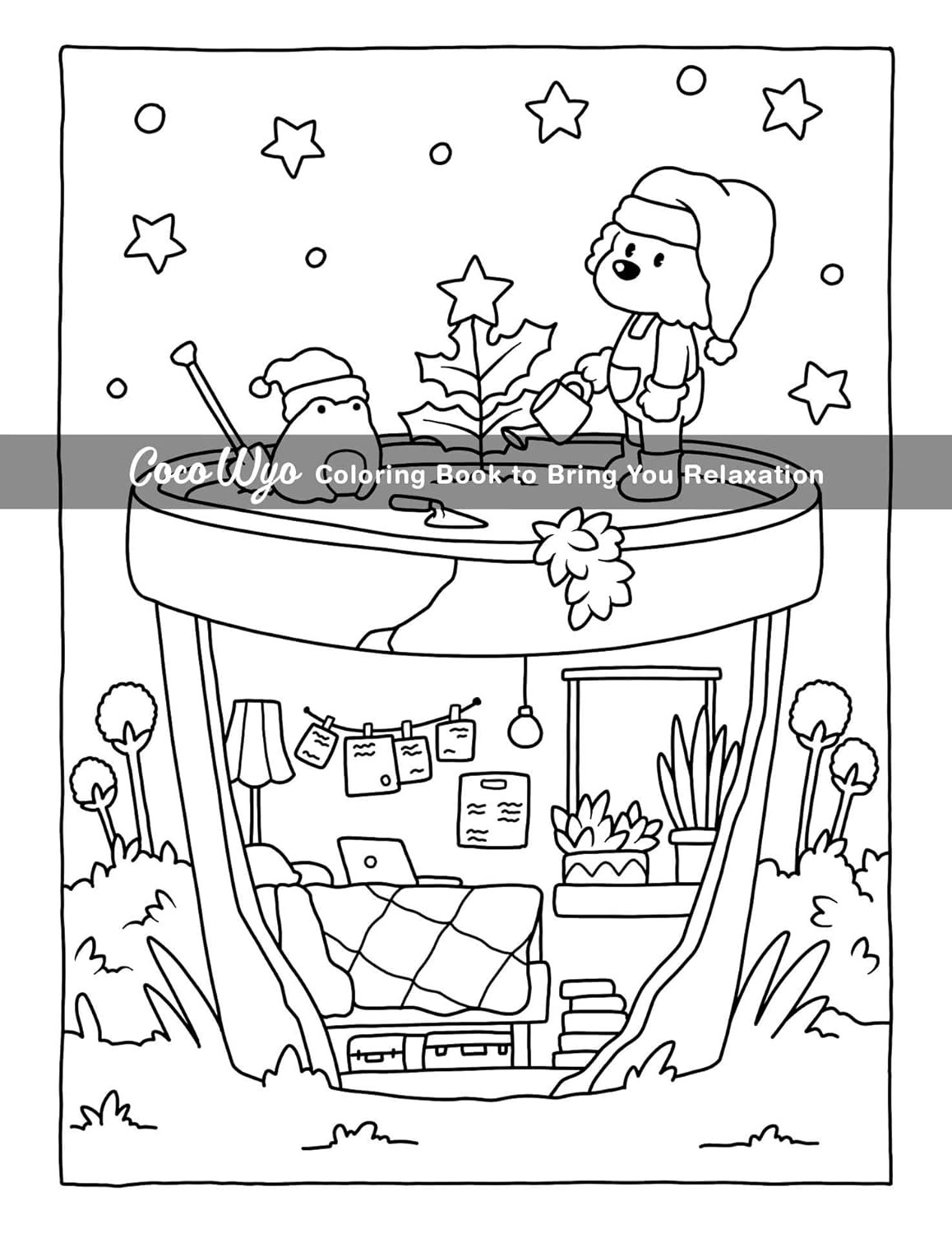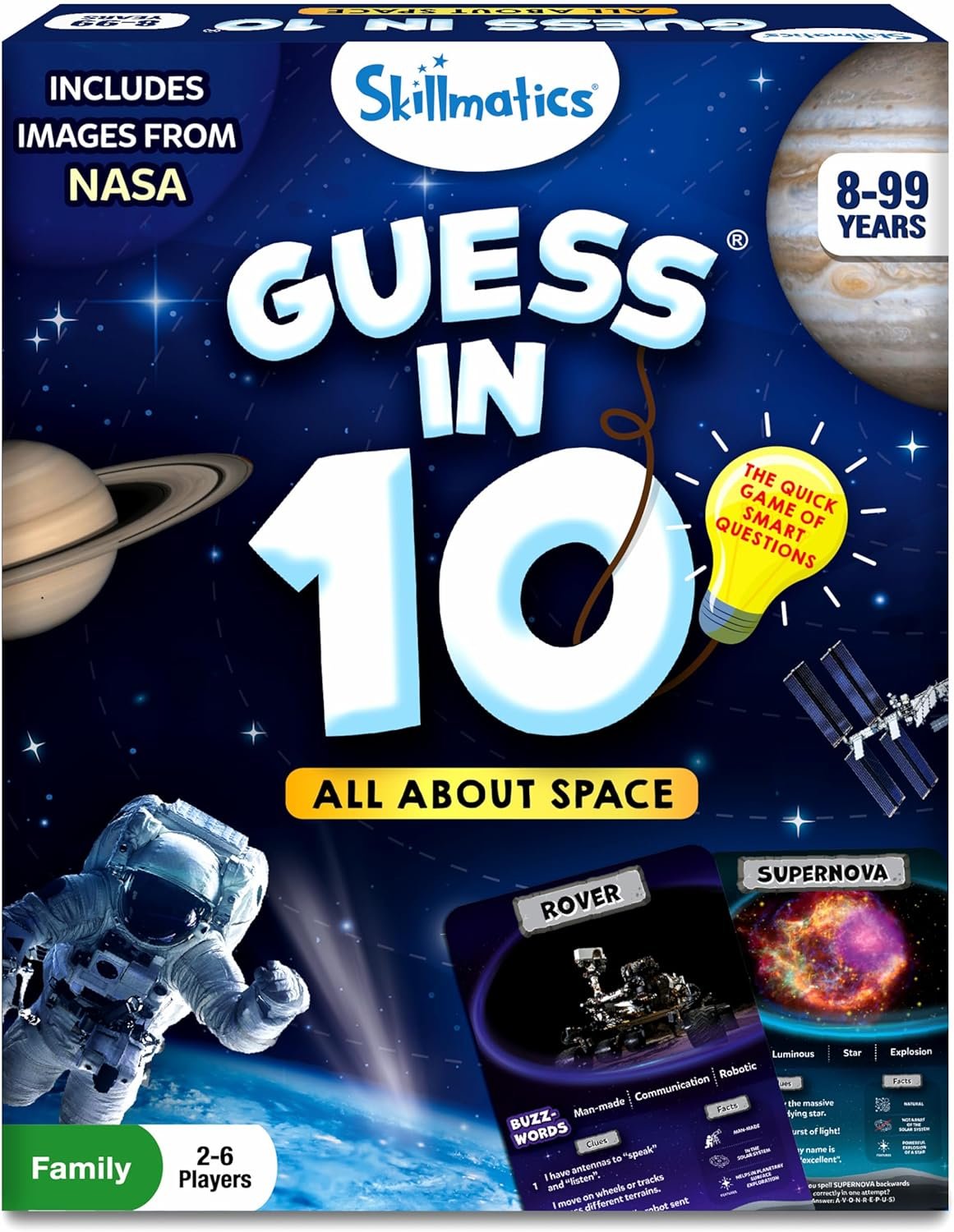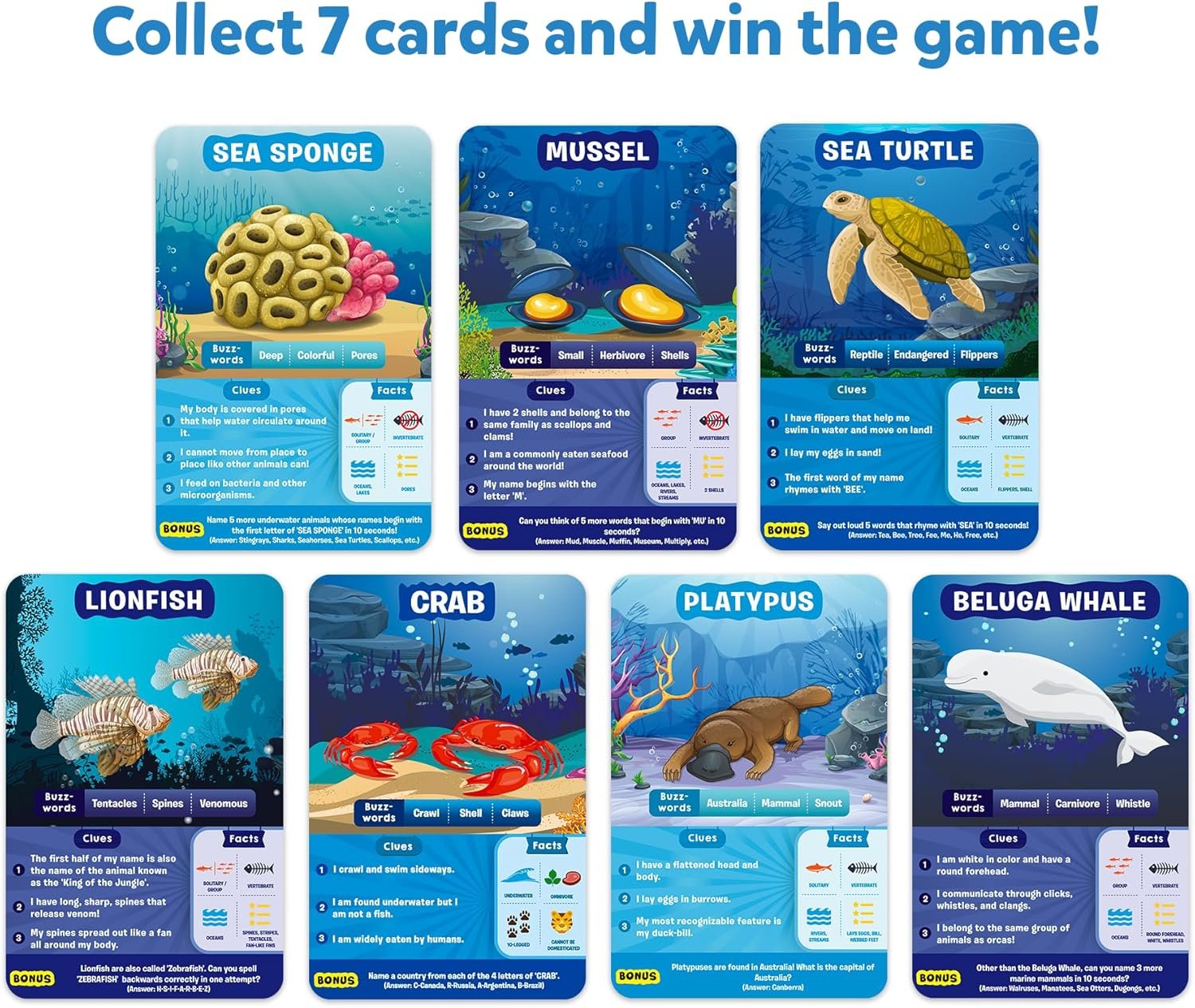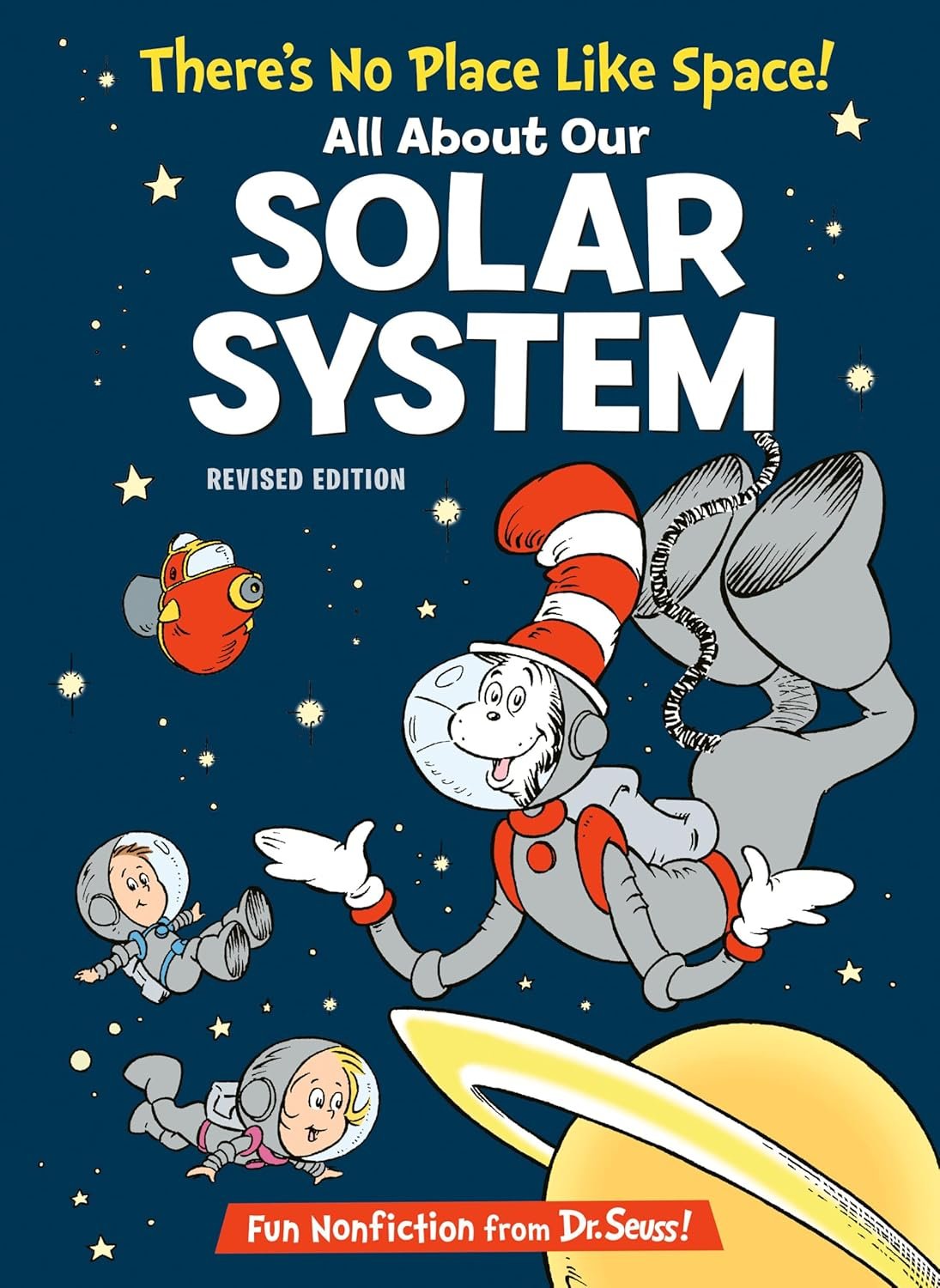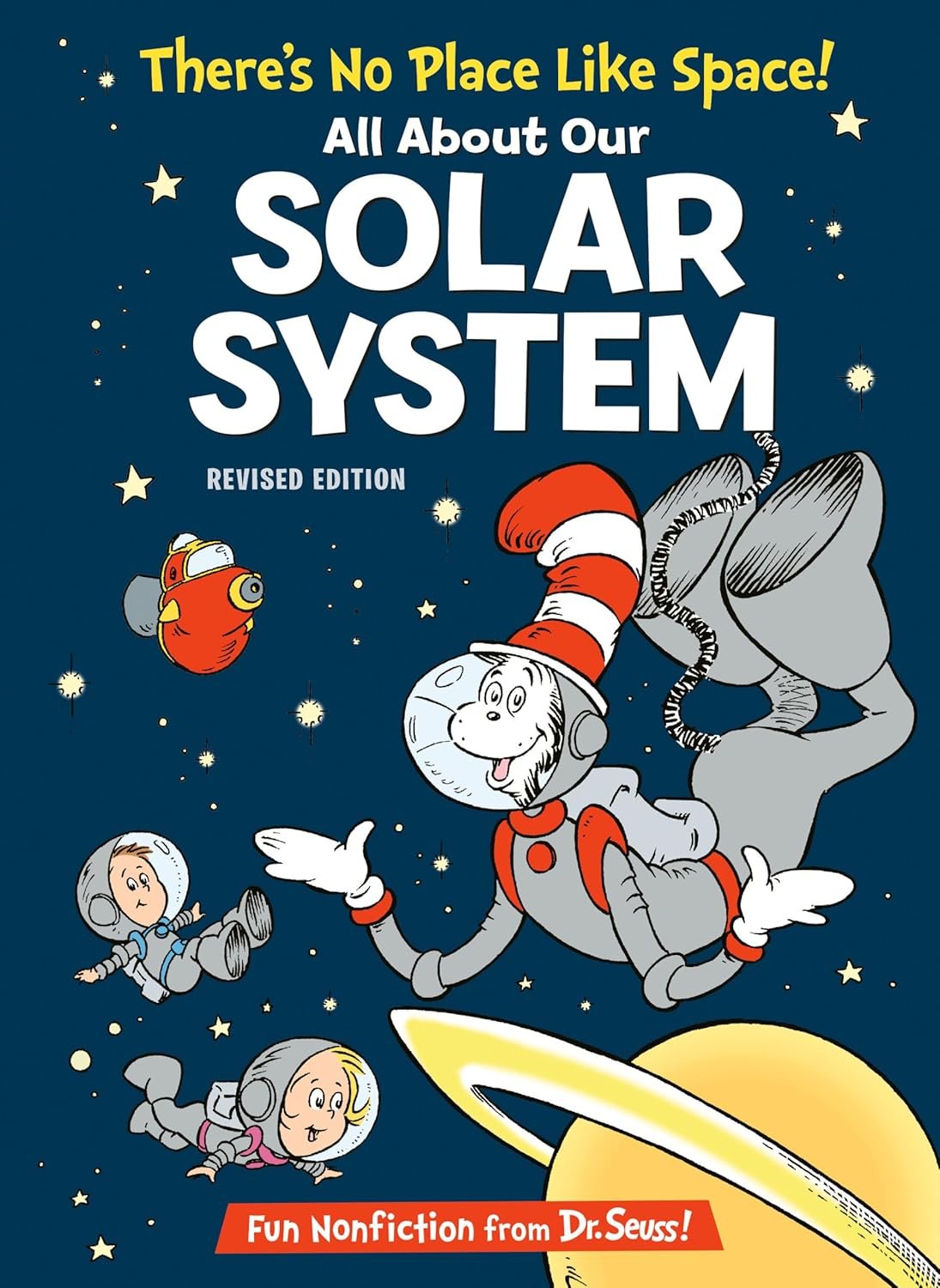STEM books boost literacy and STEM skills, engaging students while integrating curricula. Challenges exist, but the future looks bright with innovation and diversity.
Occupy Mars Astronomy Space Explorer Rocket Science T-Shirt
Science Can Solar System for Kids, Talking Astronomy Solar System Model Kit, Planetarium Projector with 8 Planets STEM Space Toys for 3 4 5+ Years Old Boys Girls
Skillmatics Guess in 10 NASA Space, Perfect for Boys, Girls, Kids & Families Who Love Card Games, Educational Toys, Travel Games, Gifts for Ages 8, 9, 10 and Up
The Cat in the Hat’s Learning Library There’s No Place Like Space! All About Our Solar System (The Cat in the Hat’s Learning Library) Hardcover – Picture Book, October 26, 1999
Outer Space Adventures: Coloring and Activity Book for Kids – 80 Pages of Astronaut-Themed Fun
What is a STEM Book? Exploring the Role of STEM Literature in Education
Reading science, technology, engineering, and math (STEM) trade books is an excellent way for students to develop literacy skills while learning STEM content. This dual benefit makes STEM books an essential part of modern education. The National Science Teachers Association (NSTA) has been recommending outstanding science trade books for several decades. Recently, they have expanded their focus to include STEM books, appointing a judging panel to select the annual list of Best STEM Books. This list is curated by volunteer educators in cooperation with the Children’s Book Council (CBC).
Understanding STEM Books
What is a STEM Book?
A STEM book is more than a simple combination of science, technology, engineering, and mathematics content. It is a unique form of literature that helps students and readers explore the world through the lens of STEM. These books incorporate the essence of scientific and engineering practices and integrate mathematics, technology, and communication skills seamlessly. This integration presents a challenge for educators, who must find ways to incorporate these books into their curricula effectively.
Why Are STEM Books Important?
STEM books play a crucial role in education by:
- Fostering Literacy and STEM Skills: They help students improve their reading skills while simultaneously gaining knowledge in STEM fields.
- Encouraging Critical Thinking: STEM literature often requires readers to think critically and solve problems, which are vital skills in today’s world.
- Promoting Engagement: These books often present STEM concepts in engaging and relatable ways, making learning more enjoyable for students.
Criteria for Selecting the Best STEM Books
The NSTA group has developed specific criteria for selecting the best STEM literature for young readers. These criteria ensure that the books not only convey accurate information but also engage and inspire students.
Key Criteria
- Modeling Real-World Innovation: The best STEM books show how STEM concepts apply to real-world scenarios, encouraging students to think about how they can use these skills in their lives.
- Embracing Design and Innovation: Books should highlight the processes of invention and innovation, illustrating how ideas are developed and refined.
- Authentic Experiences: Connections to real-world experiences help students see the relevance of STEM in everyday life.
- Assimilation of New Ideas: The books should introduce new concepts in a way that is understandable and relatable to young readers.
- Teamwork and Creativity: Illustrating the importance of collaboration and creativity in STEM fields is crucial.
- Interdisciplinary Approaches: The books should integrate multiple disciplines, showing how STEM fields overlap and interact.
- Problem Solving: Encouraging divergent thinking and the exploration of multiple solutions to problems is key.
- Engineering Habits of Mind: Books should promote systems thinking, creativity, optimization, and collaboration.
Examples of Best STEM Books
- “The Boy Who Harnessed the Wind” by William Kamkwamba: This book tells the inspiring story of a young boy in Malawi who builds a windmill to bring electricity to his village. It highlights themes of innovation, problem-solving, and perseverance.
- “Rosie Revere, Engineer” by Andrea Beaty: This picture book introduces young readers to engineering concepts through the story of a young girl who loves to build and invent.
- “Hidden Figures” by Margot Lee Shetterly (Young Readers’ Edition): This book shares the true story of the African American women mathematicians who played crucial roles in NASA’s space program, emphasizing the importance of diversity and teamwork in STEM.

How STEM Books Enhance Education
Integrating STEM Books into the Curriculum
Educators can incorporate STEM books into their teaching in various ways:
- Supplementary Reading: Use STEM books to complement the core curriculum and provide students with additional perspectives on topics they are studying.
- Project-Based Learning: Encourage students to engage in projects inspired by the books they read, allowing them to apply STEM concepts in hands-on ways.
- Discussion and Reflection: Facilitate discussions about the themes and concepts presented in STEM books to deepen understanding and encourage critical thinking.
The Impact on Students
STEM books can have a profound impact on students by:
- Increasing Interest in STEM Fields: By presenting STEM in engaging ways, these books can inspire students to pursue STEM careers.
- Developing Problem-Solving Skills: The problem-solving processes illustrated in STEM books help students develop these essential skills.
- Promoting Diversity: Many STEM books highlight the contributions of diverse individuals in STEM fields, encouraging all students to see themselves as potential STEM professionals.
Challenges in STEM Literature
Despite the benefits, there are challenges associated with integrating STEM books into education:
- Finding Quality Literature: Educators may struggle to find books that meet the NSTA’s criteria and align with their teaching goals.
- Balancing Content and Engagement: It can be challenging to find books that are both factually accurate and engaging for students.
- Integrating Across Disciplines: Ensuring that STEM books effectively integrate multiple disciplines can be difficult but is essential for holistic education.
The Future of STEM Books
As the demand for STEM education continues to grow, so too will the need for quality STEM literature. Future developments may include:
- Increased Focus on Emerging Technologies: Books that explore cutting-edge technologies like artificial intelligence and renewable energy will become increasingly important.
- More Diverse Voices: The publishing industry is likely to focus on representing diverse voices and perspectives in STEM literature.
- Interactive and Digital Formats: The use of digital and interactive formats can enhance engagement and provide new ways for students to explore STEM concepts.
Key Takeaways
- STEM Books are Essential: They provide a unique way for students to develop both literacy and STEM skills.
- Selection Criteria Matter: The NSTA’s criteria ensure that the books selected are both educational and engaging.
- Integration is Key: Educators should find creative ways to incorporate STEM books into their curricula to maximize their impact.
- Challenges Exist: Finding and using STEM books effectively can be challenging, but the benefits outweigh the difficulties.
- A Bright Future: The future of STEM books is promising, with opportunities for innovation and increased diversity.
In conclusion, STEM books are a vital component of modern education. They offer students the opportunity to explore and understand the world through the lens of STEM, preparing them for future challenges and careers. By embracing these books, educators can enhance their teaching and inspire the next generation of scientists, engineers, and innovators.




